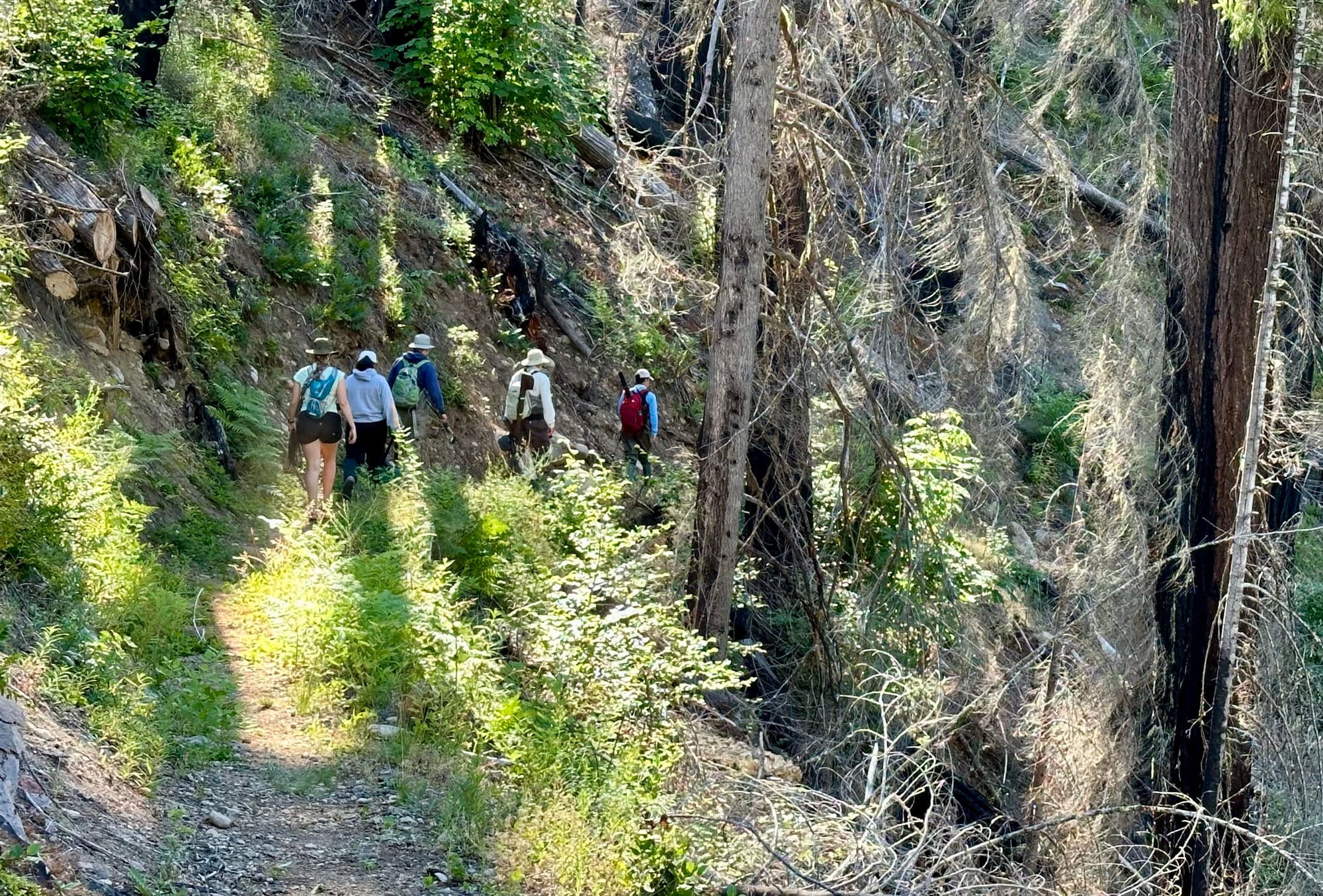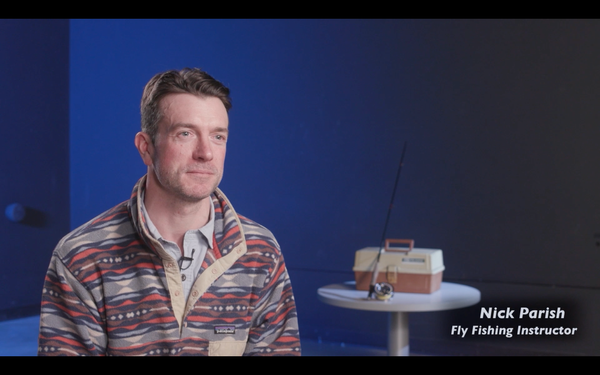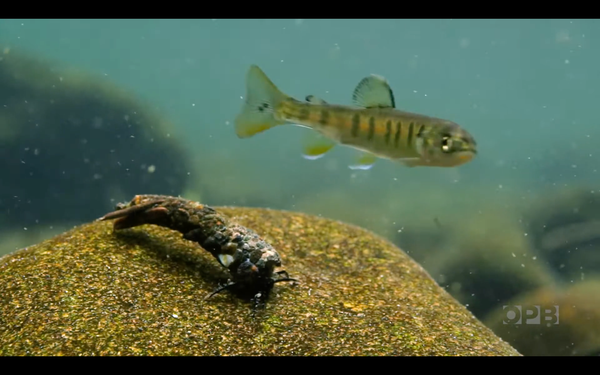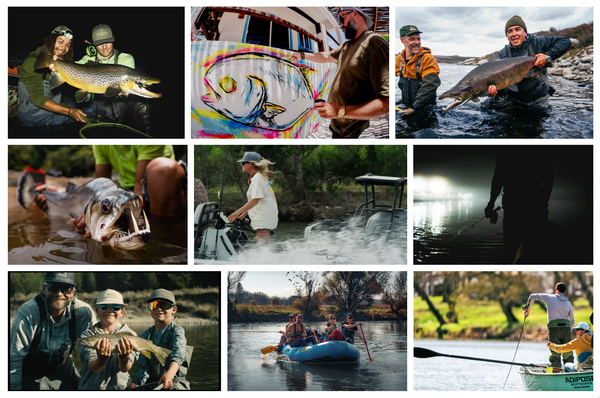Hot weather and trout fishing
A few top tips—and one essential piece of gear—can help keep fish safe when the temps get high.


It’s hot here out west. Like, heat wave hot. Like, crows walking around with their mouths open, panting hot.
In Oregon we had a cloudy and rainy-ish June, then summer slammed into gear with the holiday and a solid string of hundred-degree days.
After a few seasons in the summertime on the Deschutes, my personal hot-weather fishing program is simple: sun-proof clothing all over, ample hydration, and naps.
Protecting ourselves is easy. But I want to talk a little about what we can do as trout anglers when the temperature climbs, in order to protect fish.
Why is it important to pay attention temperatures when you’re fly fishing?
It's important to pay attention to ambient air and water temperatures because water temp has a huge bearing on trout mortality.
Like it or not, catch-and-release fishing still has a huge impact on a fish’s body.
The stress of being caught, and fighting to escape, create a massive buildup of lactic acid in the fish.
This can turn fatal if the fish is unable to break down that lactic acid with oxygen. Warmer water holds less oxygen, so there’s less recovery available to the fish.
My magic number is around 65 degrees. I don’t care too much for brinksmanship and pushing things to the limit, so unless it's the hottest part of the day and I know temps are going down, just around 65-68 is it. And that lower number stuck in my head early on with a Sammy Hagar-inspired mnemonic device / jingle I won’t inflict on you here.
(OK, ok: trout don't thriiiiive...past 65!)
Over 68, though, being caught can be a death trip for a trout.
Montana has just introduced its Hoot Owl restrictions for its major fly fishing rivers, which include mandates to get off the water by 2pm.

Hoot Owl conditions are declared on Montana rivers when they experience:
...water temperatures of 73 degrees F or higher for three consecutive days, or stream flows running below the fifth percentile of the mean historic flow for that body of water. The criteria apply only to streams managed for salmonids (trout and char), which have far less tolerance for warm water than other Montana game fish such as bass and sauger.
Check out this article (PDF) from Montana Outdoors with more information.
Keys to ensuring fish stay healthy in hot weather:
- Fish with barbless hooks to make it easier to release fish.
- Play fish to the net as quickly as possible. Don’t be afraid to put a bend in the rod, it won’t break.
- Keep fish fully submerged in your net while you remove the hook and revive them.
- Take frequent temperature readings. If the water’s over 68 degrees, it’s too hot to fish for trout. Period.
Here are a few more tips from the Oregon Department of Fish and Wildlife. Here's one absolute must they leave out:
Packing heat (measurement) on the river
A thermometer is an essential summertime trout fishing accessory. You should carry one, and take measurements as the day wears on and you move around in the river or lake.
I have a simple mercury unit like this one. encased in a little protective shell, attached to my bag with about four feet of paracord. It sits in a cupholder in my hip bag. I drop it in the water occasionally while I wade, and take a reading.
For instance, I fished yesterday, from 6-9am, up pretty high, and the water temp went from around 58 when I got in, to 60 when I got out. (I wet-waded in sandals, which I haven’t done in a while, and my feet took a solid hour to get back up to temp.)
I like a submersible unit. There are also now submersible digital units that look stylish too. Some bass anglers bring infrared units to compare surface and subsurface temps. (Water temperature is a big determinant of bass feeding intensity, it’s not necessarily about survival with them.)
Whatever the case, whatever the season, knowing the water temp can help you understand fish behavior and insect activity (hatches). It’s absolutely a data point something I think everyone’s fishing log template should include.
Altitude and attitude: Go higher, dig deeper
If your destination stretch is going to be too hot to fish, one way to beat the heat is to go higher. The more elevation you add, the cooler it will be. Typically it works out to 3.5 degrees Fahrenheit lost for every 1,000 feet of elevation gain.
That said, over the holiday weekend during our class it was 92 degrees at around 1,800 feet of elevation, so you can’t fully escape the heat when its wicked hot.
But high-mountain lakes will typically stay colder, and stream water coming into rivers at higher altitudes is probably fresher snowmelt, so it’s more likely to stay chilly as well.
You can also look for rivers with a different attitude—more shady, through canyons—or fish the stretches that aren’t being blasted by the sun. This is one of the downsides of fly fishing in wildfire burn areas. There’s an awful lot of solar exposure without big trees shading the water.
Freshwater heat lovers
During the hottest parts of the year some anglers turn to species that aren’t bothered by warmer water.
Bass and carp are two examples. They’re species that are much more tolerant of hot and funky water. The other great part is these fish can likely be found much closer to where you’re reading this than trout.
Your local golf course pond, town lake, or irrigation slough is probably teeming with fish ready to give you a run for your money.
So why don’t more fly anglers fish for them?
Well, there’s the elitism / species-ism of the coldwater fraternity, for one.
There are also folks for whom the setting is just as important as the pursuit. I’m one of those, typically, but can take a break
Waving the white flag
The Washington Department of Fish and Wildlife declared last week “Bass Week,” to help raise awareness of fishing opportunities for those species.
Some believe this is tantamount to raising a flag of surrender for coldwater species like trout and salmon. Rather than protect (and, well, rear and release hatchery clones at a rate that satisfies the consumptive angler) the fish and wildlife administrators are waving the flag of surrender in suggesting an alternative.
I’m not of this mindset. I try to stay curious about any ecosystem, and am omnivorous when it comes to catching opportunities. Especially when it’s a double-digit pound carp that could take me into my backing. Or knowing that the likely next world record smallmouth bass will come from the big river just north of me.
Resilience demands adaptation
Human degradation of the natural world will continue to wreak havoc on ecosystems, and accelerate how organisms adapt or become extinct. We’re all part of that, no matter how lightly we tread.
So when it’s too hot, and I don’t want to go where it’s not, I don’t trout fish. Or, I listen to the hoot owl, and get out before it’s too warm. There are plenty of other fly fishing adventures to be had.
Heat waves will get longer. Summers will get hotter. Sure, it feels a little like wearing the hair shirt. But if it’s a hair shirt of a feisty bass or spooky, smart carp, that’s OK with me.
Today’s absence and longing increases my conviction to help fight to protect coldwater places for the duration.
What are your tactics to beat the heat?
Reply, or let us know in the comments.

Events
Speaking of the Deschutes, where it's always hotter, the Deschutes River Alliance held the world premier of documentary The Last 100: The Fight to Save the Lower Deschutes River in Portland last week to a sell-out crowd.
The message of the film is simple: this is a resource that must be protected. Fortunately, protection is easy. There are turnkey dam operation solutions to increase the resilience of the Deschutes river fishery.
In the coming weeks and months filmmakers will be screening it in Hood River, The Dalles, Maupin, and Bend. Check it out if it's showing near you. Or, better yet, come visit for a screening and fish while you're in the neighborhood.


Class updates
Classes are over for the summer!
We had a great two-week back-to-back run with both Intro to Fly Fishing and Fly Fishing Outing students getting out on the water and catching fish.
We’re done for the Summer Term now, and I get to take a little break from teaching.
We’ll be back again with Fall Term classes in late September, as well as the ‘official’ launch of this companion website / newsletter thing.
This companion website / newsletter thing
Like I said, work continues apace to get all our class notes and whatnot turned into a sturdier reference zone for class alums and other curious folks.
Here’s a public affirmation, mostly to keep me diligent (I know you’re not champing at the bit): it should all be in there by the end of September, when we welcome another group of alums.







